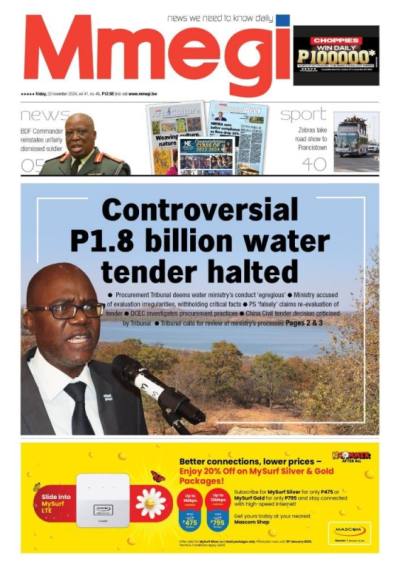The country’s principal economic activity, diamond mining, enters a tricky period in the second half of the year, with fiscal authorities upgrading their risk assessments and De Beers unsure of the outlook due to pressures on demand for the gems.
The major factors facing the industry in the second half of the year are high inventory levels of polished diamonds in the midstream, which affects demand for rough diamonds, as well as ongoing global economic uncertainties, particularly in major markets such as the United States.
The US Federal Reserve raised interest rates to a 22-year high last week, further pressuring consumers in a market that accounts for about 54% of the diamond jewellery market.
Meanwhile, the anticipated surge in demand from the reopening of the Chinese market this year was softer than expected, dampening consumer confidence.
Last week, the Ministry of Finance marginally increased its assessment of low diamond demand for the year.
“Risks of lower diamond demand and output have been rising with weak global demand prospects,” the ministry said in a brief update released last Friday.
According to estimates released in February, government had expected that mineral revenues for the 2023–2024 fiscal year would reach P23.3 billion or just under 30% of total revenues. The country’s mineral revenues are traditionally powered by diamond mining, based on sales from Debswana and Karowe mines.
Tighter demand for rough diamonds not only affects government revenues due to lower sales from producers, but also impacts growth as companies such as Debswana constrain their output to match demand.
The latest forecasts for the diamond industry are a sharp turnaround from last year, when the industry enjoyed a strong rebound from COVID-19, with Debswana’s sales reaching an all-time high of P56.5 billion. The strong performance helped mineral revenues sail beyond the P30.2 billion forecast in the 2022–2023 budget, with final figures scheduled to be made public later this month.
The strong uptake of rough diamonds last year, combined with an uncertain economic outlook this year, have contributed to the high levels of inventory in the diamond downstream, which is clouding the performance of the industry this year.
On Monday, Bank of Botswana figures indicated that in the first six months of the year, sales from Debswana dropped to P28.6 billion in the first half of the year, down 7.7 percent from the corresponding period last year. While down, the sales in the first half are still the second highest interim figures ever recorded by Debswana, beaten only by the same period last year, when the producer was on its way to historic sales.
“It’s a tough time in the global diamond market this year after 2022 which was a bumper year for diamonds,” said prominent economist, Keith Jefferis at Bifm’s business seminar last Thursday. “This year has been a very difficult one with the slowdown in the US in particular, weak growth in China, lots of serious competition from synthetic diamonds and excess inventories by various levels of the value chain. “De Beers’ sales are down in the first half compared to last year and that will affect our exports and fiscal revenues this year.”
Last week, De Beers Executive Vice-President – Diamond Trading, Paul Rowley, told local journalists that the diamond giant does not expect a rapid turnaround from its first half performance in which rough diamond sales dropped by 23% year-on-year. Average prices in the first half of the year decreased by 23% which De Beers said reflected the more cautious approach its clients took to planning their 2023 allocation schedule due to the uncertain macro-economic outlook.
“We are not expecting a rapid turnaround and headwinds are expected to continue to weigh on consumer confidence in the immediate term,” Rowley told media. “Despite a rough diamond cycle, we understand that the sale of diamonds is cyclical and we are optimistic about the long run because there is still a strong desire for natural diamonds.”
Rowley said the diamond giant expects that demand for rough diamonds in the medium term will be further bolstered by the contribution of upper-middle income country markets as their desire for the gems has been increasing, especially in markets such as India.
“We also expect that our sales will improve as the sanctions by the G7 will erode demand for Russian diamonds. “This will create an opening for us and we are in process for improving the traceability of Botswana diamonds,” he said.
All eyes are on the period between Thanksgiving in the United States and the Chinese New Year, which is the diamond industry’s traditional peak selling period. Government, De Beers and other players are hoping retail demand perks up enough to mop up the high inventories in the midstream, allowing room for producers such as Debswana to stabilise their output.
Meanwhile, analysts at leading economic consultancy, Econsult, have said lower diamond production was expected to be the main driver of slower growth this year.
“This, combined with lower diamond prices, will also have an impact on diamond exports,” the analysts said in a report released this week. “Government may try to offset this slowdown to some extent with additional spending, given the run-up to the national election due in 2024.”








